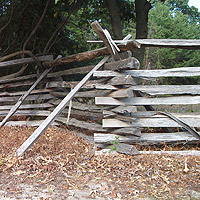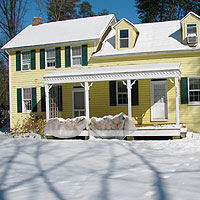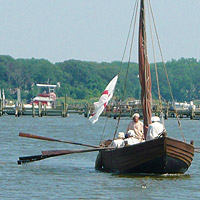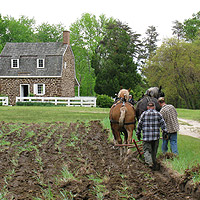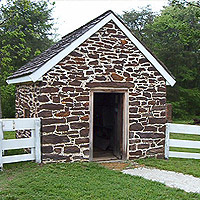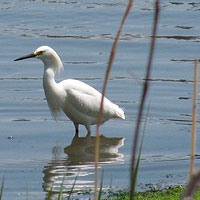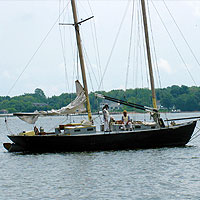
Public Hours
April through October
Sundays 1-4 PM (except Easter)
Extended hours based per event.
Explore
About the Farm
Hancock Family
Photo Gallery
History
Events Calendar
Upcoming:

Hancock Family Timeline
|
YEAR |
WHO? |
GENERATION |
EVENT |
| 1664 | Stephen Hancock | 1st |
Arrived in Maryland on the ship Supra – Stephen was indentured to John Blomfield, agent for William Calvert, Esq. Governor of Maryland. |
| 1667 | Stephen Hancock | 1st |
Indenture was completed – He was granted Planter status with 50 acres. |
| 1678 |
Stephen Hancock Rebecca Crouch |
1st
|
Married Rebecca Crouch, daughter of Wm. Crouch of Broad Neck.
|
| 1680 |
William Hancock |
2nd |
Born to Stephen and Rebecca. |
| 1701 | Stephen Hancock | 1st |
Died – His estate worth 65L included an indentured servant. |
| 1703 |
William Hancock Jane North |
2nd
|
William married Jane North.
|
| 1704 | Stephen Hancock, Sr. |
3rd
|
Stephen Senior was born to William and Jane. He was the oldest of 4 children. |
| 1741 |
Stephen Hancock, Sr.
Helen Leshoday
|
3rd
|
Stephen Senior married Helen Leshoday.
|
| 1747 | Stephen Hancock, Jr. | 4th |
Stephen Junior was born to Stephen Hancock Senior. He was the 3rd child, the first to survive, and the only one of 4 children to survive to adulthood. |
| 1754 | William Hancock | 2nd |
William died. His will referred to the plantation where he lived. It indicated that ½ the land was leased from Worthington (Dividing Point) which later became part of Hancock’s Resolution. |
| 1764 |
Stephen Hancock, Jr. Margaret Cromwell |
4th
|
Stephen Junior married Margaret Cromwell.
|
|
1766 |
Francis Hancock |
5th |
Francis was born to Stephen Junior and Margaret. There is no record of siblings. |
| 1771 |
Margaret Cromwell |
4th |
Margaret died prior to 1771. Her mother’s will lists “Margaret’s children." |
| 1778 |
Stephen Hancock, Jr. Belinda Ridgely |
4th
|
Stephen Junior married Belinda Ridgely, his second wife.
|
| 1780 | Stephen Hancock, Jr. |
4th
|
Served in 6th Company, 3rd Regiment of the Continental Army. He served from 1780 to 1783. |
| 1783 | Stephen Hancock, Jr. |
4th
|
Was discharged from the Army. He was discharged after the British surrendered at Yorktown. |
| 1785 | Stephen Hancock, Jr. |
4th
|
Stephen Junior built the stone house that is now known as Hancock's Resolution. |
| 1798 |
Francis Hancock Jemima Selby |
5th
|
Francis married Jemima Selby.
|
| 1799 | John Hancock | 6th | John was born to Francis and "Mima". There is no record of siblings. |
| 1801 |
Stephen Hancock, Jr. Ann Cromwell |
4th
|
Stephen Junior married Ann Cromwell. Ann was the widow of Margaret's brother and Stephen's 3rd wife.
|
| 1807 | Stephen Hancock, Jr. |
4th
|
Resurveyed and combined his holdings. Stephen's holdings at this time were 409.5 acres which he named "Long Meadows". |
| 1808 | Francis Hancock | 5th | Was appointed Lieutenant in the 22nd Maryland Regiment. |
| 1808 |
Francis Hancock Rachel Beal |
5th
|
Francis married Rachel Beal, his second wife.
|
| 1808 | Francis Hancock | 5th | Purchased a portion of Long Meadows on the Patapsco River. |
| 1809 |
Stephen Hancock, Jr. Ann Cromwell |
4th
|
Both Stephen and Ann died in 1809. Their grave stones in 1962 were the oldest legible grave stones.
|
| 1812 | Francis Hancock | 5th | Listed as a Captain in the 22nd Maryland Regiment in military records. |
| 1814 | Francis Hancock | 5th | As a Captain in the 22nd Maryland Regiment, he was active for 17 days "near Bodkin". |
| 1825 |
John Hancock Elizabeth Williams |
6th
|
John married Elizabeth Williams.
|
| 1826 | Elizabeth Williams | Elizabeth died and had no children. | |
| 1827 |
John Hancock Rhoda Alwell |
6th
|
John married Rhoda Alwell, his second wife.
|
| 1828 |
John Hancock Francis Hancock |
6th 5th |
John purchased the stone house and 100 acres from Francis.
|
| 1829 | Henry Alfred Hancock | 7th | Henry was born to John and Rhoda. |
| 1831 | Rhoda Alwell | Rhoda died. Henry Alfred was her only child. | |
| 1831 |
Francis Hancock Caroline Hancock |
5th 6th |
Francis died. His house and property on the Patapsco passed to his daughter, Caroline.
|
| 1833 |
John Hancock Mary Leeke |
6th
|
John married Mary Leeke, his third wife. They had 6 children of which 4 survived to adulthood.
|
| 1853 | John Hancock | 6th | John died. At his death John's estate was held by his wife and children. |
| 1861 |
Henry Alfred Hancock Matilda Wilkinson |
7th
|
Henry Alfred married Matilda Wilkinson.
|
| 1863 | Annie Melvina Hancock |
8th
|
Annie Melvina was born to Henry Alfred and Matilda.
|
| 1866 | Rhoda Virginia Hancock |
8th
|
Rhoda Virginia (Ginny) was born to Henry Alfred and Matilda. |
| 1869 | Mary Adaline Hancock |
8th
|
Mary Adaline (Mamie) was born to Henry Alfred and Matilda. |
| 1872 |
John Henry Hancock William Edward Hancock |
8th
|
The twins, John Henry (Harry) and William Edward were born to Henry Alfred and Matilda. William Edward died the next day.
|
| 1882 | Henry Alfred Hancock |
7th
|
Purchased the stone house and 100 acres from his family.
|
| 1934 | Henry Alfred Cook | 8th | Henry Alfred Cook, the husband of Rhoda Virginia (Ginny) died. |
| 1935 | John Henry Hancock | 8th | John no longer shipped farm produce by boat to the Baltimore market at Long Dock. Harry continued to grow produce and shipped it by truck with the cooks and Calverts. |
| 1954 | Mary Adaline Hancock |
8th
|
Mary Adaline (Mamie) died. She never married.
|
| 1958 | Rhoda Virginia Hancock |
8th
|
Rhoda Virginia (Ginny) died. She asked her family to preserve the family house and history. |
| 1962 | John Henry Hancock | 8th | John Henry (Harry) died. The contents of the house were left to Rhoda's children (Pansy, Tillie, and Philip Cook). The house and 14 acres were left to "Annapolis Historic Society" to be preserved for historic value. |
